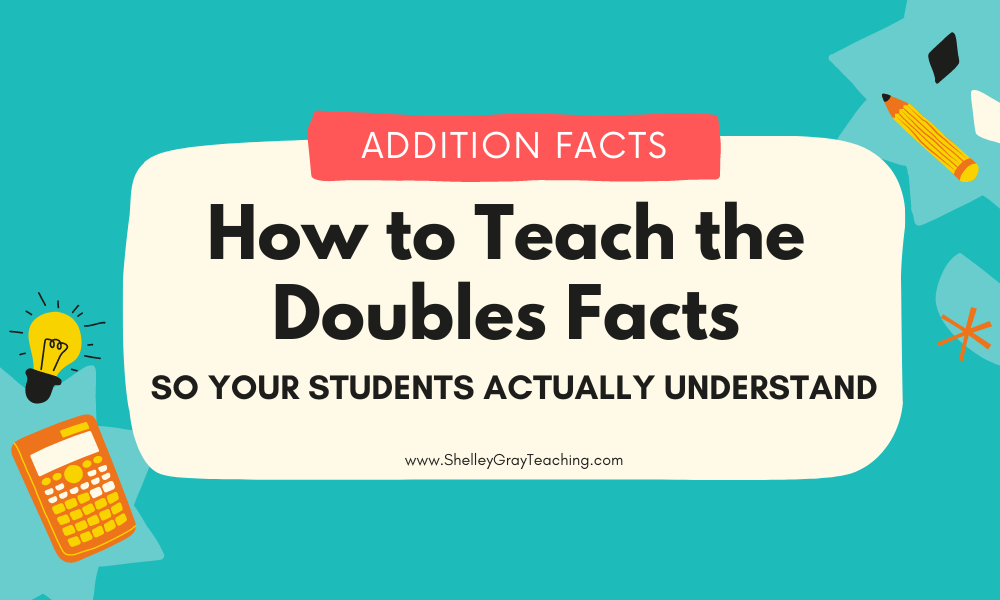
What are the doubles facts in math? How do you teach them? Why are the doubles addition facts important? By the time you finish reading this article, you’ll have an excellent understanding of all things “doubles” and also leave with some free resources and fun games to get you started teaching this important math concept in your classroom!
WHAT ARE THE DOUBLES FACTS?
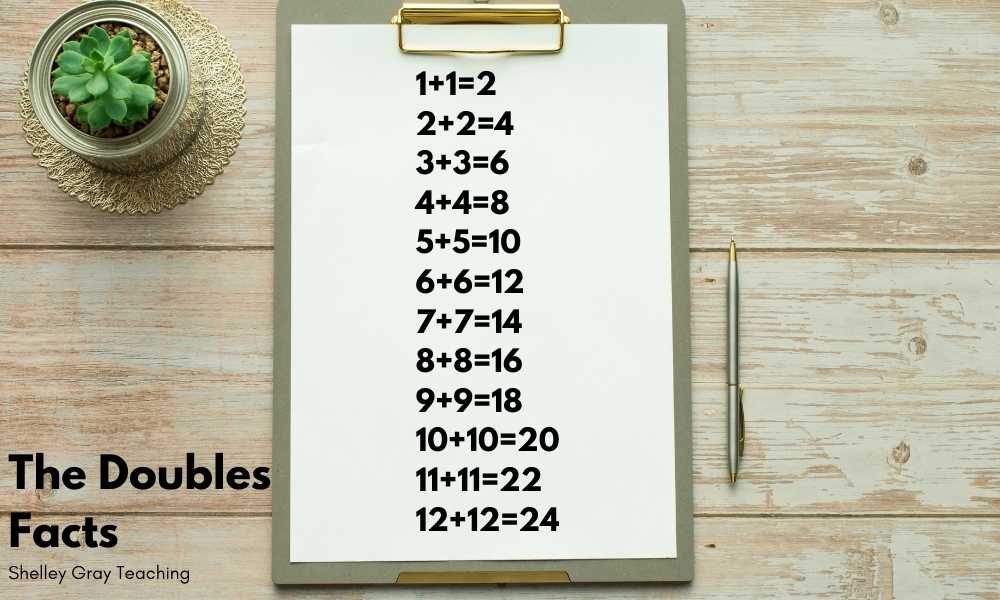
THE DOUBLES FACTS IN REAL LIFE
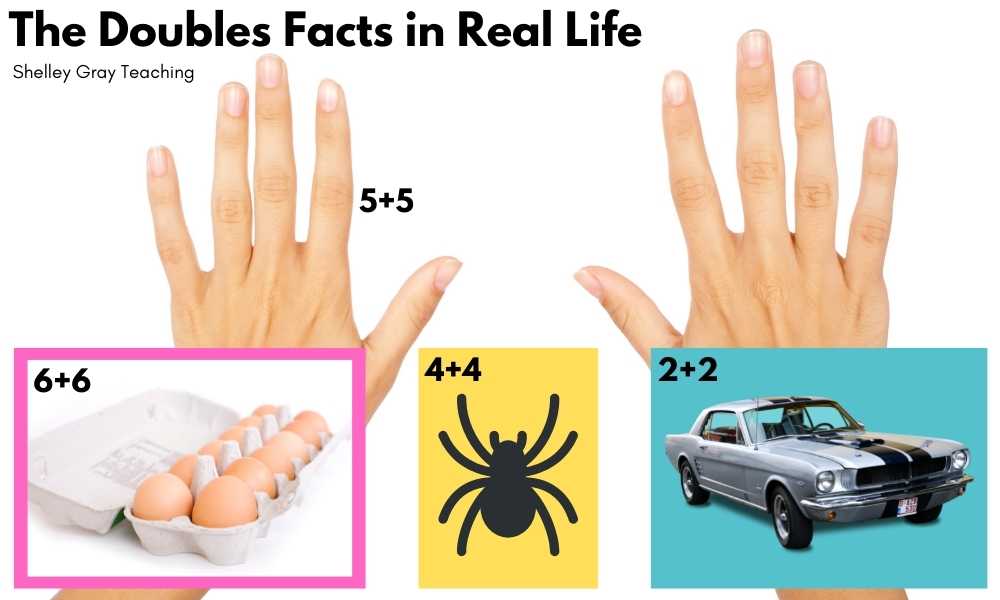
REMEMBERING THE DOUBLES FACTS
Your students will have an easier time with more advanced mental math strategies and even with multiplication by 2 if they just know the doubles math facts. But that doesn’t mean you have to resort to memorization only.
It is important for students to work with math facts in a hands-on way as they build their understanding.
One of the best ways to work with the doubles facts is with ten frames. Have your students build the fact on the ten frames with different colors.
You can also have students build doubles using a rekenrek, or even simple colored cubes.
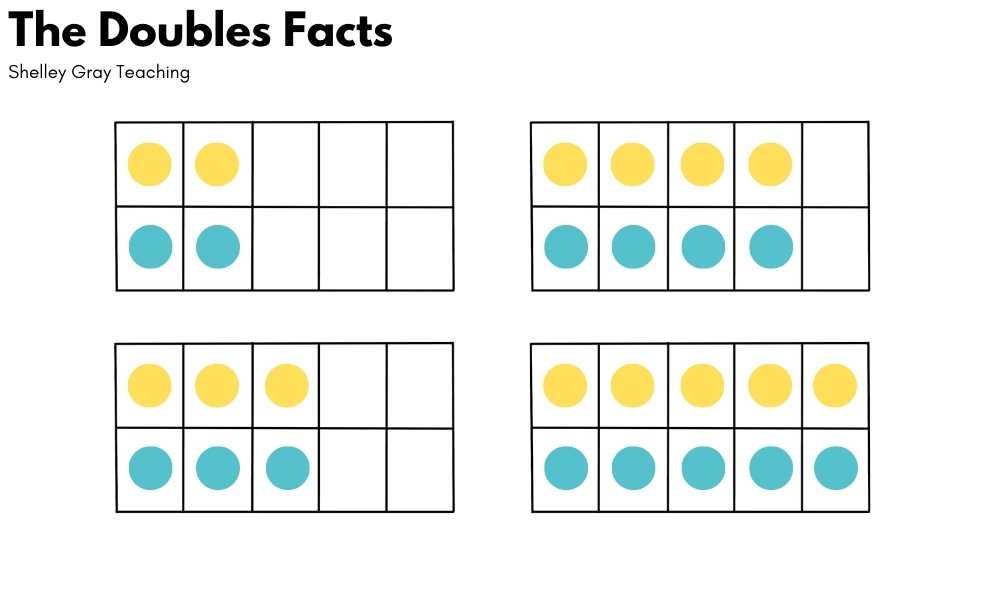
FREE Doubles Fact Booklets
LOOKING BEYOND THE DOUBLES FACTS
To understand why the doubles math facts are important, it helps to have a vision for where you are headed. Here are some other concepts that rely on the doubles.
NEAR DOUBLES
Near doubles are facts like 5+6, 10+11, or 3+4. For these facts, we can use what we know about doubles to solve a new fact. For example, for 3+4, we can think, “I know that 3+3=6, so 3+4 is just one more!”
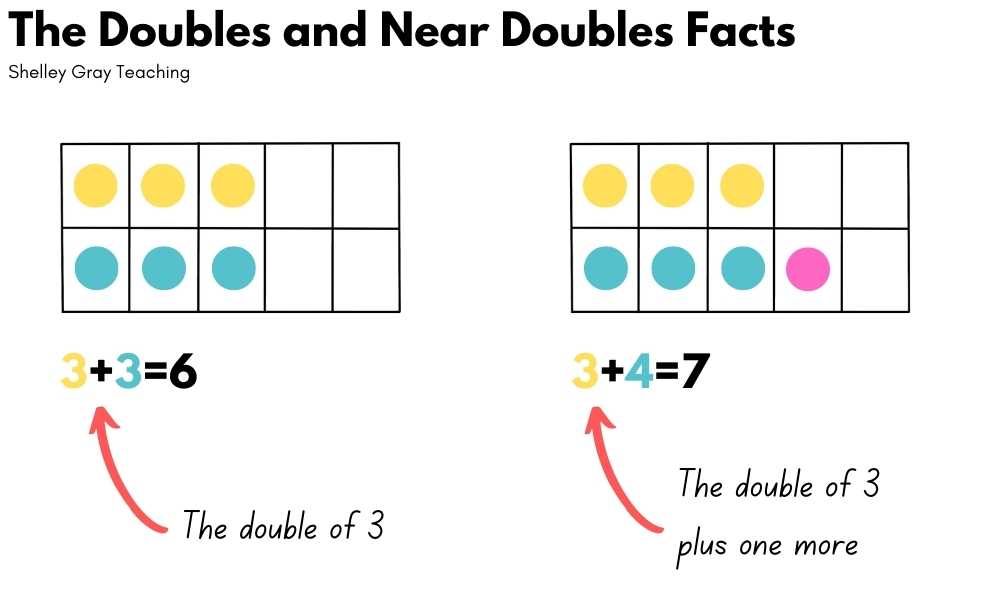
MULTIPLICATION BY 2
In third grade when students learn to multiply, the 2 times table is generally the first set of multiplication facts they learn. We teach these facts by making a connection to the addition doubles. For example, to solve 2×3, we can think, “2 groups of 3” or 3+3.
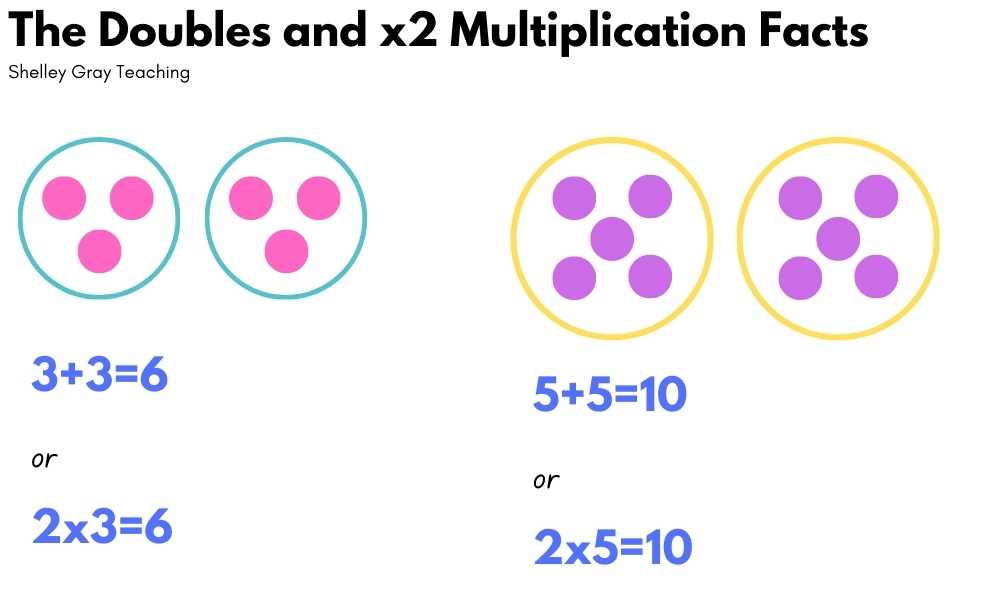
DOUBLES FACT PRACTICE
There are lots of simple ways to practice the addition doubles, but some of my favorite involve games.
The first one is called Dice Doubles. This takes 1 minute and is something I used to do with my classes all the time to increase automaticity. My favorite part of this game is that each student is only competing against themselves, trying to increase their own score each time.
See how to play Dice Doubles HERE.
The second game is another dice game called Doubles Race to 100. It’s a fun partner game that is sure to raise the energy level in your classroom!
FREE DOUBLES FACT BOOKLETS
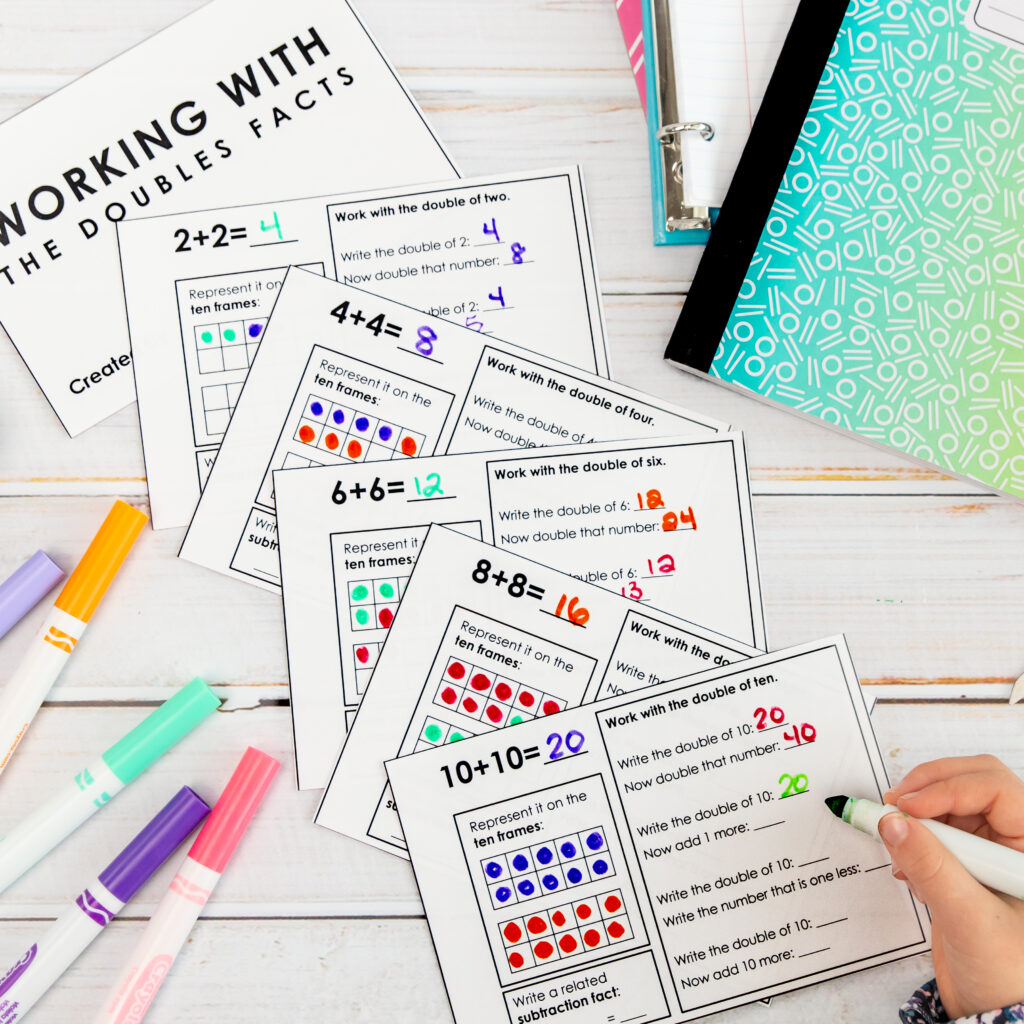
These booklets will be fun for your students to complete. Not only do they focus on the addition doubles, but also on how we can make different connections using 1 more, 1 less, 10 more, and repeated doubling!

Not Sure How To Teach Rounding Numbers? Make it hands-on! (Try This!)
“Four or less, let it rest. Five or more, add one more.” Right? Wrong!! Do you find that rounding is confusing for your students? Do
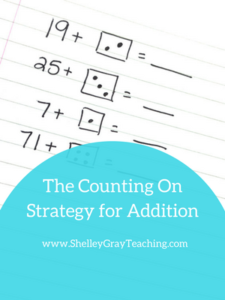
Teaching the Counting On Addition Strategy? Don’t Forget to Do This.
Counting On is a beginning mental math addition strategy. It is generally taught as an introductory mental math strategy and is usually simple for students
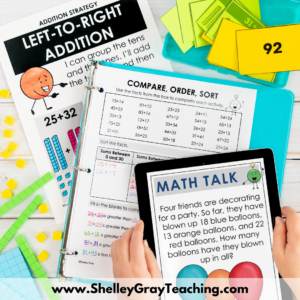
Effective Mental Math Addition Strategies to Master the Addition Facts
So you’re ready to implement mental math addition strategies this year, but aren’t sure where to start! All the different ways to teach addition facts






